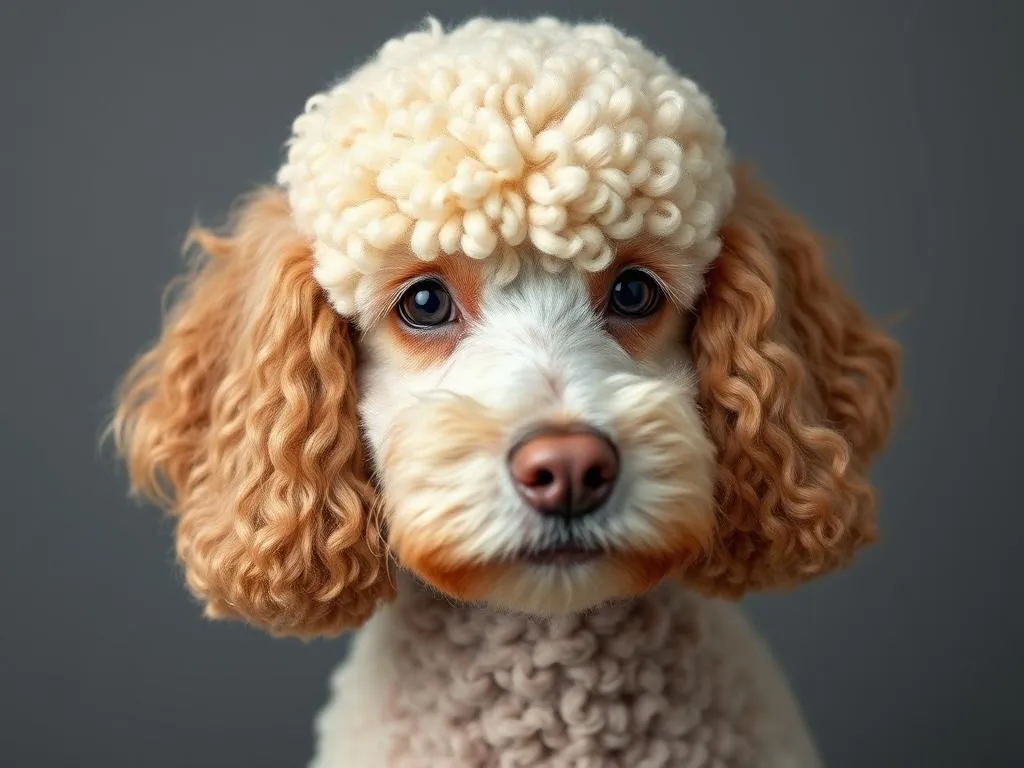
Introduction
Dog breeds are distinct groups within the species Canis lupus familiaris, each exhibiting unique physical and behavioral traits. Understanding different dog breeds is crucial for potential pet owners and dog enthusiasts, as it helps in selecting a companion that fits their lifestyle and needs.
Dog breeding has a rich history, dating back thousands of years. Initially, dogs were bred for specific purposes, such as hunting, herding, guarding, and companionship. Today, breeding continues to serve these purposes but has expanded to include producing dogs for activities like agility, obedience, and therapy.
Among the myriad breeds, the Phantom Poodle stands out due to its striking appearance and delightful temperament. Highlighting this breed is significant not only for its unique qualities but also for the joy it can bring to families and individuals alike.
Understanding Dog Breeds
What is a Dog Breed?
A dog breed is defined as a group of dogs that share a common ancestry and possess similar characteristics. These characteristics may include size, coat type, color, and behavioral traits. Breeds are typically classified as either purebred or mixed breed.
- Purebred dogs are those whose ancestry can be traced back to a specific breed, conforming to established breed standards.
- Mixed breed dogs have parents of different breeds and may exhibit a combination of traits from each lineage.
Types of Dog Breeds
Dogs can be categorized into various groups based on their original purpose and characteristics:
-
Sporting Breeds: These dogs are known for their active nature and are often used in hunting and field trials. Examples include Labrador Retrievers and Golden Retrievers.
-
Working Breeds: Bred for tasks such as guarding, pulling sleds, and search and rescue, these dogs are intelligent and strong. Examples include Doberman Pinschers and Rottweilers.
-
Herding Breeds: These breeds are skilled at managing livestock and include Border Collies and Australian Shepherds.
-
Terriers: Known for their feisty personalities, terriers were originally bred for hunting vermin. Examples include Jack Russell Terriers and Bull Terriers.
-
Toy Breeds: Small in size but big in personality, toy breeds are often companions. Examples include Chihuahuas and Pomeranians.
-
Non-Sporting Breeds: This diverse group includes dogs that don’t fit into other categories, such as Bulldogs and Dalmatians.
-
Hound Breeds: Bred for hunting, hounds are known for their keen sense of smell and persistence. Examples include Beagles and Bloodhounds.
The Phantom Poodle
What is a Phantom Poodle?
The Phantom Poodle is a specific coloration pattern found in Poodles, characterized by a two-tone coat where one color is predominant, and the other is a secondary color that appears in specific areas like the eyebrows, muzzle, legs, and chest. This unique coloring sets the Phantom Poodle apart from standard Poodles, making it a visually striking choice for dog lovers.
Characteristics of Phantom Poodles
Physical Attributes
Phantom Poodles can be found in three sizes: Standard, Miniature, and Toy. Their coats are curly and dense, which not only adds to their charm but also contributes to their hypoallergenic qualities. The color patterns in Phantom Poodles can vary significantly, with combinations like black and tan or chocolate and cream being quite popular.
Temperament
Phantom Poodles are known for their friendly and intelligent nature. They are highly trainable and thrive on mental stimulation and social interaction. Their playful demeanor makes them excellent companions for families and individuals alike.
Health Considerations
Like all breeds, Phantom Poodles can be prone to certain health issues, including hip dysplasia, eye disorders, and skin conditions. Regular veterinary check-ups and a healthy diet can help mitigate these risks, and their lifespan typically ranges from 12 to 15 years.
Phantom Poodle Variations
Phantom Poodles come in three sizes, each catering to different lifestyles:
- Standard Phantom Poodles: Weighing between 40 to 70 pounds, they require ample space and exercise.
- Miniature Phantom Poodles: Weighing around 10 to 15 pounds, they are more suited for smaller living spaces.
- Toy Phantom Poodles: Weighing under 10 pounds, they are ideal companions for those in apartments or with limited mobility.
In addition to size variations, color patterns can differ widely, adding to the breed’s appeal.
Choosing the Right Dog Breed
Factors to Consider
When selecting a dog breed, several factors should be considered:
- Lifestyle Compatibility: Active individuals may prefer a more energetic breed, while those with a sedentary lifestyle might opt for a calmer dog.
- Space Requirements: Larger breeds require more space, whereas smaller breeds can thrive in apartments.
- Allergies and Grooming Needs: Hypoallergenic breeds like the Phantom Poodle make excellent choices for allergy sufferers, but their grooming needs should also be factored in.
Benefits of Owning a Phantom Poodle
The Phantom Poodle offers numerous benefits for potential owners:
- Hypoallergenic Qualities: Their curly coat traps dander and hair, making them a suitable option for allergy sufferers.
- Intelligence and Trainability: Phantom Poodles are known for their quick learning ability, allowing for easier training.
- Family-Friendly Nature: Their gentle and affectionate temperament makes them wonderful companions for families with children.
When to Choose a Phantom Poodle
Phantom Poodles are ideal in a variety of environments. Families, singles, and even seniors can benefit from their loving nature and adaptability. However, they do require regular exercise and mental stimulation, making them suitable for active individuals or those willing to engage in regular playtime.
Caring for a Phantom Poodle
Basic Care Requirements
Proper care is essential for the health and happiness of a Phantom Poodle.
- Feeding Guidelines: A balanced diet tailored to the dog’s size and age is crucial. Consult your veterinarian for specific dietary recommendations.
- Exercise Needs: Regular exercise is vital. Daily walks, playtime, and mental challenges through toys or training sessions are recommended to keep them stimulated and healthy.
Grooming
Grooming is an important aspect of caring for a Phantom Poodle. Their curly coats require regular maintenance to prevent mats and tangles.
- Coat Care and Maintenance: Brushing several times a week is advised, along with professional grooming every 6 to 8 weeks.
- Tools and Techniques for Grooming: Use a slicker brush and a comb for best results. Regular bathing with appropriate dog shampoo will keep their coat clean and healthy.
Health Care
Regular veterinary check-ups are essential to monitor the health of your Phantom Poodle. Vaccinations and preventive care, including flea and tick prevention, should be part of their health routine.
Training a Phantom Poodle
Importance of Training
Training is crucial for any dog breed, especially for intelligent breeds like the Phantom Poodle. Early training helps to establish good behavior and socialization skills, making them well-adjusted companions.
Training Techniques
Positive reinforcement methods, such as treats and praise, work best for training Phantom Poodles. Teaching common commands like “sit,” “stay,” and “come” can significantly improve behavior and strengthen the bond between dog and owner.
Addressing Behavioral Issues
While Phantom Poodles are generally well-behaved, they can exhibit common behavioral problems such as chewing or excessive barking if not properly stimulated.
- Common Behavioral Problems: Lack of exercise or boredom can lead to these issues.
- Strategies for Correction: Providing ample exercise, mental challenges, and consistent training can help address these behaviors effectively.
Conclusion
Understanding different dog breeds is essential for making informed decisions about pet ownership. The Phantom Poodle, with its unique characteristics and endearing temperament, offers a wonderful option for those looking for a loyal companion. With proper care and training, these dogs can thrive in various environments, bringing joy and love to their families.
In summary, the Phantom Poodle is a remarkable breed that deserves attention for its beauty and temperament. Whether you’re a first-time dog owner or an experienced enthusiast, considering this breed could lead to a fulfilling and joyful companionship.









